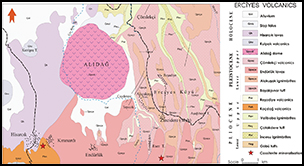No CrossRef data available.
Published online by Cambridge University Press: 05 June 2015

An unexpected new source of tin was recently located at Hisarcık, in the foothills of the Mount Erciyes volcano in the Kayseri Plain, close to the Bronze Age town of Kültepe, ancient Kanesh and home to a colony of Assyrian traders. Volcanoes in Turkey have always been associated with obsidian sources but were not known to be a major source of heavy metals, much less tin. X-ray fluorescence analyses of the Hisarcık ores revealed the presence of minerals suitable for the production of complex copper alloys, and sufficient tin and arsenic content to produce tin-bronze. These findings revise our understanding of bronze production in Anatolia in the third millennium BC and demand a re-evaluation of Assyrian trade routes and the position of the Early Bronze Age societies of Anatolia within that network.